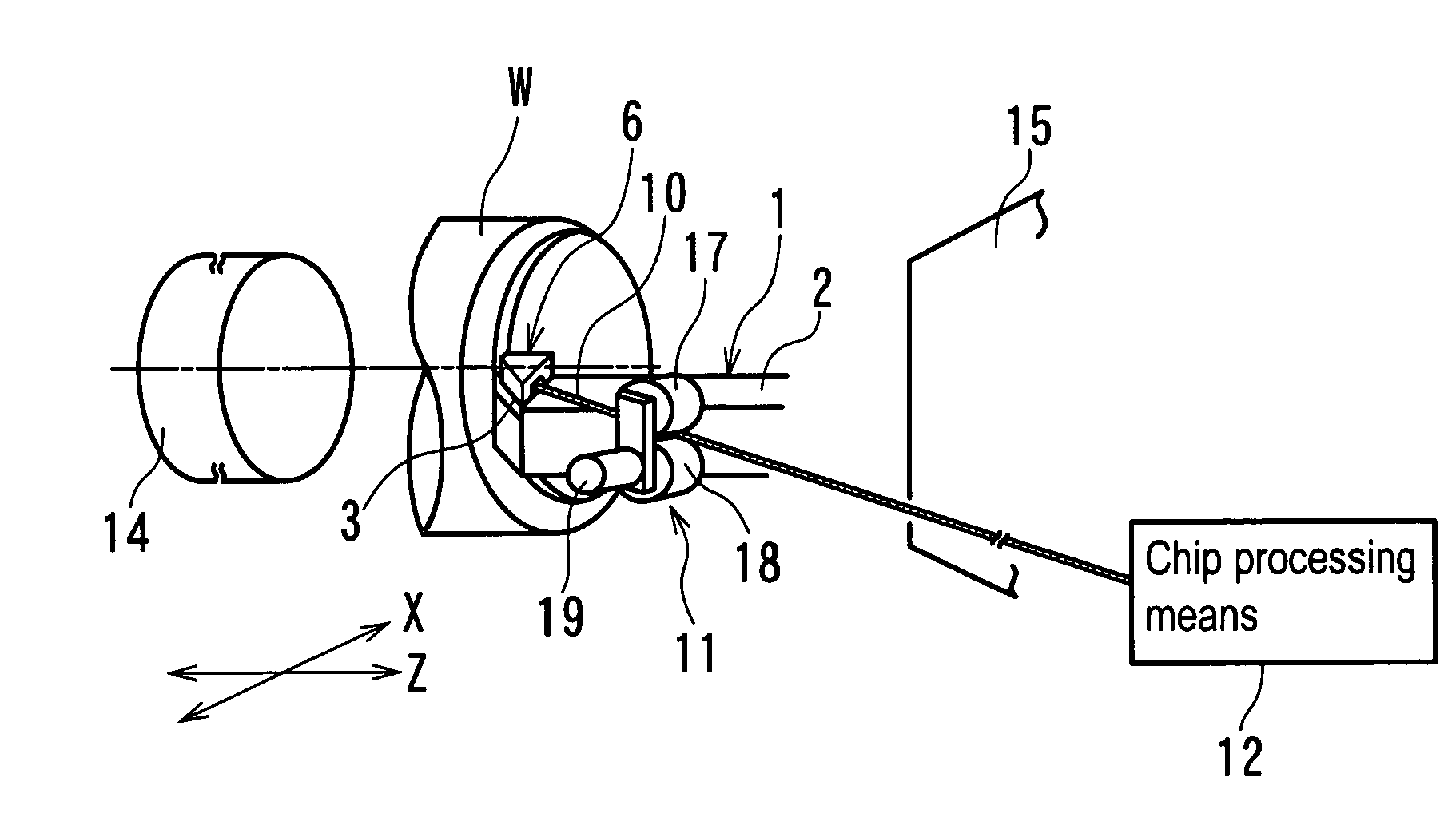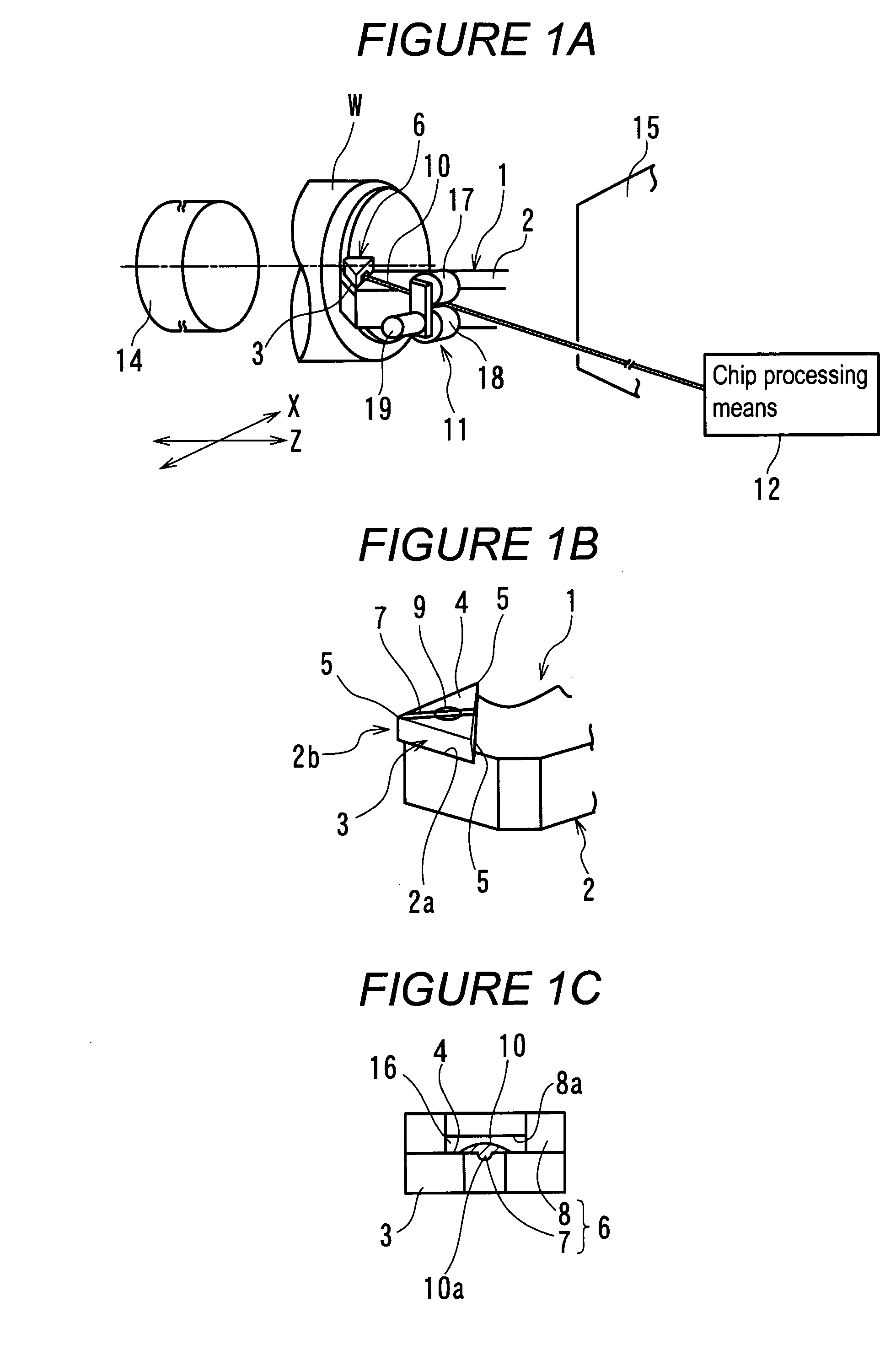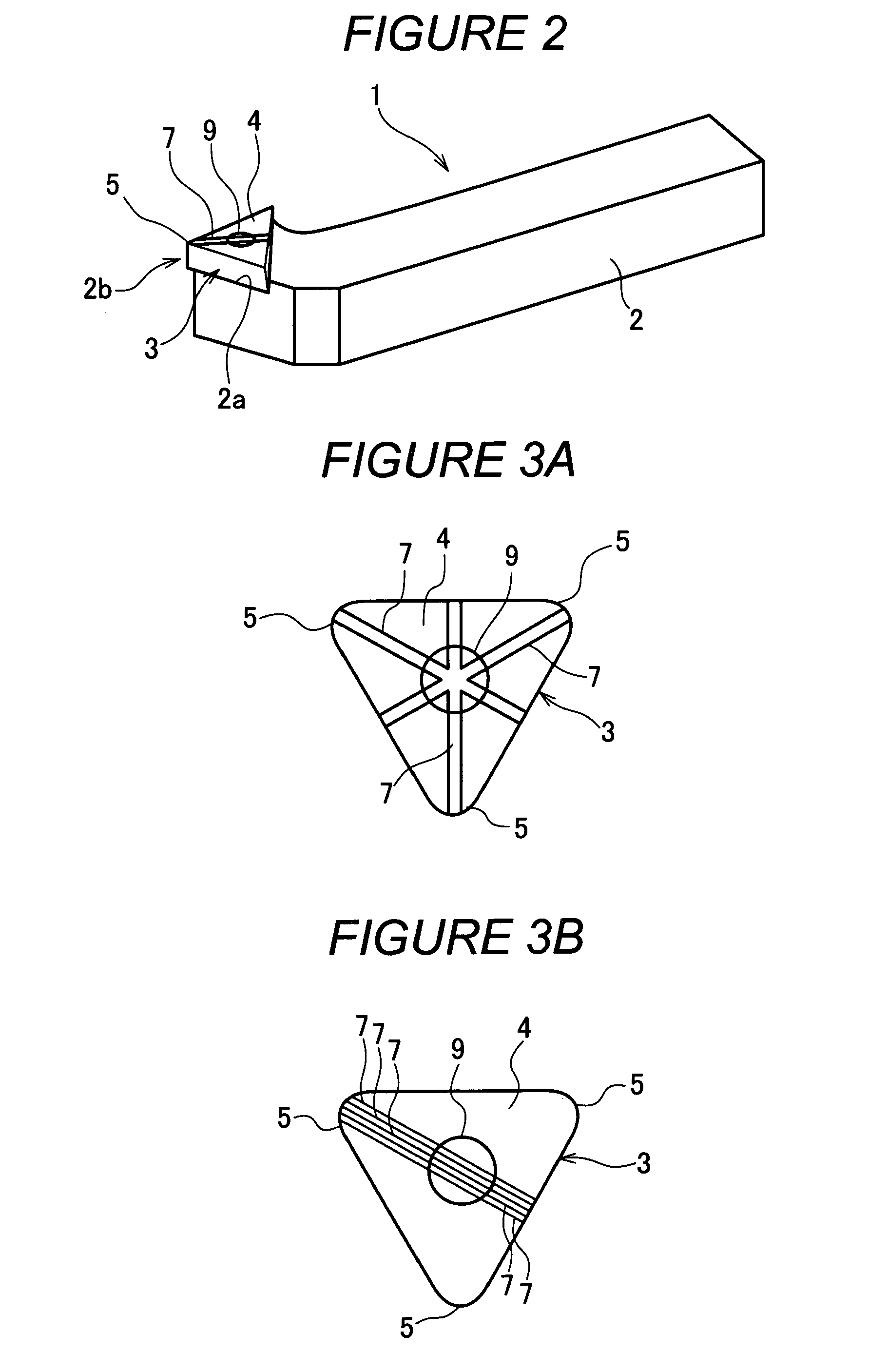Machine tool with chip processing function
a technology of processing function and machine tool, which is applied in the direction of manufacturing tools, cutting cutters, cutting inserts, etc., can solve the problems of reducing tool life, increasing the quantity of cutting heat, and reducing the cutting resistance, so as to improve the general machinability of the machine, reduce the amount of cutting heat, and reduce the effect of cutting resistan
- Summary
- Abstract
- Description
- Claims
- Application Information
AI Technical Summary
Benefits of technology
Problems solved by technology
Method used
Image
Examples
Embodiment Construction
[0087]A first embodiment of the present invention will be described with reference to FIGS. 1 to 22. FIG. 1 schematically shows a machine tool with a chip processing function. The machine tool brings a cutting tool 1 into abutting contact with a rotating workpiece W for cutting. The machine tool includes a tensile force applying means 11 for applying a tensile force to a chip 10 continuing with a workpiece W and flowing from a cutting edge line 5 of the cutting tool 1, a chip guiding means 6 for guising the chip 10 to the tensile force applying means 11, and a chip processing means 12 for processing the chip 10 having passed through the tensile force applying means 11. Furthermore, a guide path (not shown in the drawings) such as a pipe is provided between the tensile force applying means 11 and the chip processing means 12 so that the chip 10 is passed and guided through the guide path. The chip processing means 12 is a device that carries out a process of severing or winding the c...
PUM
| Property | Measurement | Unit |
|---|---|---|
| tip angle | aaaaa | aaaaa |
| nose radius | aaaaa | aaaaa |
| cutting speed | aaaaa | aaaaa |
Abstract
Description
Claims
Application Information
 Login to View More
Login to View More - R&D
- Intellectual Property
- Life Sciences
- Materials
- Tech Scout
- Unparalleled Data Quality
- Higher Quality Content
- 60% Fewer Hallucinations
Browse by: Latest US Patents, China's latest patents, Technical Efficacy Thesaurus, Application Domain, Technology Topic, Popular Technical Reports.
© 2025 PatSnap. All rights reserved.Legal|Privacy policy|Modern Slavery Act Transparency Statement|Sitemap|About US| Contact US: help@patsnap.com



